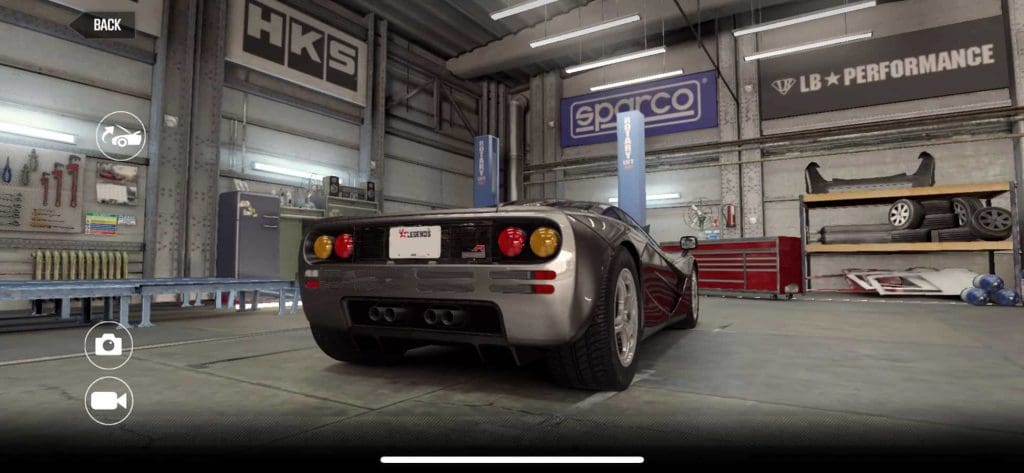The McLaren F1 is the CSR2 Legends Prize Car. The McLaren is one of the fastest cars in Tier 5.
McLaren F1 Specifications
Real life F1
There are only a few sports cars that have earned legendary status in the course of almost 130 years of automotive history. Among them are the Bugatti Type 35, the Bugatti Type 57, the Mercedes-Benz 300 SL, the Ferrari 250 GTO, the Ferrari F40, the Bugatti Veyron – and the McLaren F1. When this vehicle went into development in the mid-1980s, such a status was by no means foreseeable. On the contrary, outside experts rather expected a flop.
After all, McLaren had never before put a sports car with road registration on its wheels – apart from a few examples of the M6 GT in 1969. Spurred on by a wave of success in Formula 1, an in-house development team led by Gordon Murray set about building an unusual concept. After all, it was clear very early on that the driver would sit in the center of the cockpit for excellent weight distribution.
This rather unusual driver placement offered the possibility of accommodating two co-drivers in the cockpit at the same time. Their seats are located diagonally backwards behind the center seat on both sides. The basis is a carbon monocoque including the roof area, to which the body parts are attached in addition to subframes at the front and rear.
The doors open like butterfly wings far into the roof. In the front, a small flap hides some service fillers, a Kenwood CD player and the on-board tools. At the rear, the glazed flap opens the way to the engine and, when unlocked, also opens another service door behind it. Trunk? Yes, there are two trunks. Both are located behind the doors and came from the factory with a five-piece tailor-made luggage set.
BMW engine
Together with BMW Motorsport GmbH under the direction of Paul Rosche, a 6.1 liter V12 naturally aspirated engine including variable camshaft adjustment and individual throttle valves was created for the McLaren F1. The 12-cylinder engine from the 850 CSi served as the basis, which BMW had already developed a little further for the M8, which was planned at the time but never went into series production. The power output of 461 kW/627 bhp is still today a best value for non-supercharged engines.
Unlike other manufacturers, McLaren originally planned the F1 as a pure road vehicle. It was only due to increasing customer demand that McLaren cooperated with the British company Lanzante to turn the road sports car into a GT1 variant for the GT championships. The corresponding GTR made its debut in 1995, two years after the road car, and immediately won the 24 Hours of Le Mans.
More on the McLaren F1
The CSR2 McLaren F1
The 5 purple star McLaren can fit 135 Fusion parts. So far nothing special. The F1should run 7.195s. To sum up, the McLaren is one of the fastest cars in Tier 5.
| Legends Price Car | After restoring all Legends Cars |
McLaren F1 tune and shift pattern
| McLaren F1 @Elite Lvl 0 | |
|---|---|
| Tier | 5 |
| NOS | 188 / 4.0 |
| Transmission | 2.00 |
| Tires | 0 / 100 |
| Wining shift pattern | Perfect start, 38mph 2nd, deep good 3rd and NOS, rest deep good or perfect shifts |
| Time | 7.195 |
| McLaren F1 @Elite Lvl 50 | |
|---|---|
| Tier | 5 |
| NOS | 188 / 4.0 |
| Transmission | 2.00 |
| Tires | 0 / 100 |
| Wining shift pattern | Start at 4500-4800rpm, 6000rpm 2nd, good 3rd and NOS, rest deep good or perfect shifts |
| Time | 6.904 |




